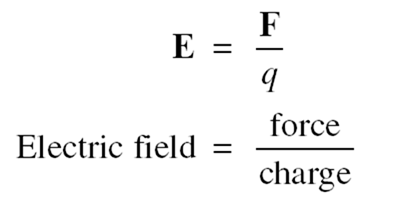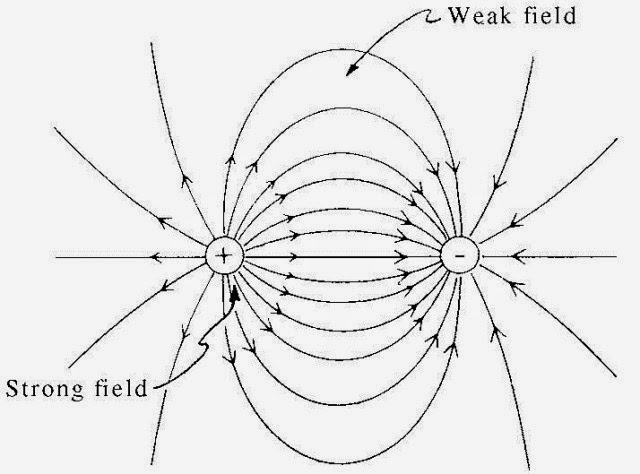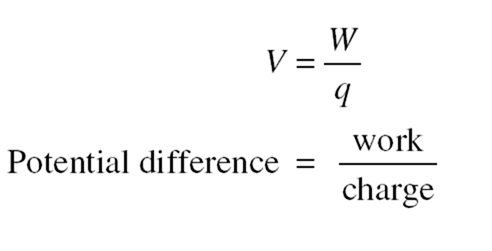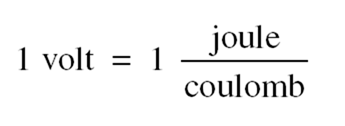Electricity
In This Chapter:
✔ Electric Charge
✔ Atoms and Ions
✔ Coulomb’s Law
✔ Electric Field
✔ Electric Field Lines
✔ Potential Difference
Electric Charge
Electric charge, like mass, is one of the basic properties of certain elementary particles of which all matter is composed. There are two kinds of charge, positive charge and negative charge. The positive charge in ordinary matter is carried by protons, the negative charge by electrons. Charges of the same sign repel each other, charges of opposite sign attract each other.
The unit of charge is the coulomb (C). The charge of the proton is +1.6 × 10−19 C, and the charge of the electron is −1.6 × 10−19 C. All charges occur in multiples of ±e = ±1.6 × 10−19 C.
According to the principle of conservation of charge, the net electric charge in an isolated system always remains constant. (Net charge means
the total positive charge minus the total negative charge.) When matter is created from energy, equal amounts of positive and negative charge al- ways come into being, and when matter is converted to energy, equal amounts of positive and negative charge disappear.
Atoms and Ions
An atom of any element consists of a small, positively charged nucleus with a number of electrons some distance away. The nucleus is composed of protons (charge +e, mass = 1.673 × 10−27 kg) and neutrons (uncharged, mass = 1.675 × 10−27 kg). The number of protons in the nucleus is normally equal to the number of electrons around it, so the atom as a whole is electrically neutral. The forces between atoms that hold them together as solids and liquids are electric in origin. The mass of the electron is 9.1 × 10−31 kg.
Under certain circumstances, an atom may lose one or more electrons and become a positive ion or it may gain one or more electrons and become a negative ion. Many solids consist of positive and negative ions rather than of atoms or molecules. An example is ordinary table salt, which is made up of positive sodium ions (Na+) and negative chlorine ions (Cl−).
Coulomb’s Law
The force one charge exerts on another is given by Coulomb’s law:
where q1 and q2 are the magnitudes of the charges, r is the distance be- tween them, and k is a constant whose value in free space is
The value of k in air is slightly greater. The constant k is sometimes re- placed by
where ε0, the permittivity of free space, has the value
(ε is the Greek letter epsilon.)
Solved Problem 11.1 Two charges, one of +5 × 10−7 C and the other
−2 × 10−7 C, attract each other with a force of −100 N. How far apart are they?
Solution. From Coulomb’s law, we have
Electric Field
An electric field is a region of space in which a charge would be acted upon by an electric force. An electric field may be produced by one or more charges, and it may be uniform or it may vary in magnitude and/or direction from place to place.
If a charge q at a certain point is acted on by the force F, the electric field E at that point is defined as the ratio between F and q:
Electric field is a vector quantity whose direction is that of the force on a positive charge. The unit of E is the newton per coulomb (N/C) or, more commonly, the equivalent unit volt per meter (V/m).
The advantage of knowing the electric field at some point is that we can at once establish the force on any charge q placed there, which is
Electric Field Lines
Field lines are a means of describing a force field, such as an electric field, by using imaginary lines to indicate the direction and magnitude of the field. The direction of an electric field line at any point is the direction in which a positive charge would move if placed there, and field lines are drawn close together where the field is strong and far apart where the field is weak (Figure 11-1).
Figure 11-1
Solved Problem 11.2 The electric field in a certain neon sign is 5000 V/m. What force does this field exert on a neon ion of mass 3.3 × 10−26 kg and charge +e?
Solution. The force on the neon ion is
Potential Difference
The potential difference V between two points in an electric field is the amount of work needed to take a charge of 1 C from one of the points to the other. Thus
The unit of potential difference is the volt (V):
The potential difference between two points in a uniform electric field E is equal to the product of E and the distance s between the points in a direction parallel to E:
Since an electric field is usually produced by applying a potential differ- ence between two metal plates s apart, this equation is most useful in the form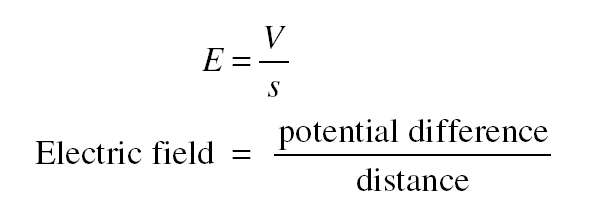
You Need to Know
A battery uses chemical reactions to produce a potential difference between its terminals; a genera- tor uses electromagnetic induction for this purpose.
Solved Problem 11.3 The potential difference between a certain thundercloud and the ground is 7 × 106 V. Find the energy dissipated when a charge of 50 C is transferred from the cloud to the ground in a lightning stroke.



